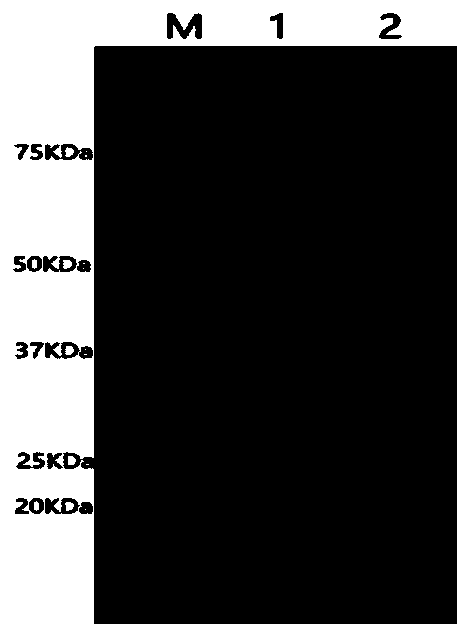Special dietary proteins
A protein and quality technology, applied in peptide/protein components, food science, drug combination, etc., can solve problems such as heavy family burden, intestinal metabolic disorder, poor patient treatment compliance, etc., achieve production cost reduction, broad market prospects, The effect of great practical application value
- Summary
- Abstract
- Description
- Claims
- Application Information
AI Technical Summary
Problems solved by technology
Method used
Image
Examples
Embodiment 1
[0048] Example 1. Construction of Escherichia coli strains expressing phenylalanine-free protein and protein fermentation production and preparation
[0049] This example takes the E. coli K12 expression system as an example to illustrate the strain construction, protein expression and purification of the E. coli expression system for recombinant expression of no / low phenylalanine proteins. The Escherichia coli K12 (Escherichia coli K12) used in the examples was purchased from the American Type Culture Collection (ATCC). Unless otherwise specified, the reagents used in the experiment are all commercially available scientific research reagents or consumables. The ingredients and preparation methods of various reagents and media can refer to the operation in the routine experiment manual.
[0050] 1. Construction of Escherichia coli expression strains
[0051] 1. Construction of expression vector
[0052] According to the phenylalanine-free target protein sequence (PKU1, see S...
Embodiment 2
[0064] Example 2. Construction of no / low phenylalanine protein strains expressed by Bacillus and protein fermentation production and preparation
[0065] This example takes the Bacillus licheniformis expression system as an example to illustrate the strain construction, protein expression and preparation of the Bacillus expression system expressing no / low phenylalanine protein. The Bacillus licheniformis strain (B. licheniformis CICC 10266) used in the examples was purchased from China Industrial Microorganism Culture Collection and Management Center.
[0066] The pEBKan194-GFP plasmid used in the examples is pKGFP194ts in another patent application of the applicant (application number: 201610410811.8), and its construction information can be found in Example 1 of the specification of this application.
[0067] Unless otherwise specified, the reagents used in the experiment are all commercially available scientific research reagents or consumables. The ingredients and preparat...
Embodiment 3
[0101] Example 3. Construction of yeast recombinant expression of phenylalanine-free protein strains and protein fermentation production and preparation
[0102] This example takes the Pichia pastoris expression system as an example to describe the strain construction, protein expression and purification preparation of the yeast expression system expressing no / low phenylalanine protein. The Pichia pastoris X-33 and plasmid pPICZαA used in the examples were purchased from Invitrogen. Unless otherwise specified, the reagents used are all commercially available research reagents or consumables. The ingredients and preparation methods of various reagents and media can refer to the operation in the routine experiment manual.
[0103] 1. Construction of recombinant Pichia pastoris expressing phenylalanine-free protein
[0104] 1. Construction of recombinant expression plasmid pPICZαA-PKU3
[0105] According to the phenylalanine-free target protein sequence (PKU3, see SEQ ID NO: 3 ...
PUM
 Login to View More
Login to View More Abstract
Description
Claims
Application Information
 Login to View More
Login to View More - R&D
- Intellectual Property
- Life Sciences
- Materials
- Tech Scout
- Unparalleled Data Quality
- Higher Quality Content
- 60% Fewer Hallucinations
Browse by: Latest US Patents, China's latest patents, Technical Efficacy Thesaurus, Application Domain, Technology Topic, Popular Technical Reports.
© 2025 PatSnap. All rights reserved.Legal|Privacy policy|Modern Slavery Act Transparency Statement|Sitemap|About US| Contact US: help@patsnap.com



